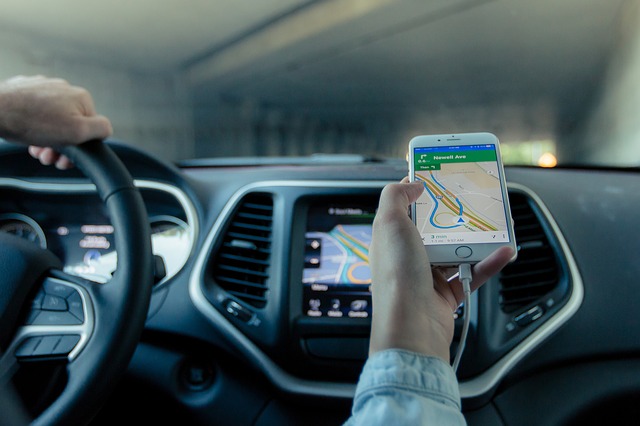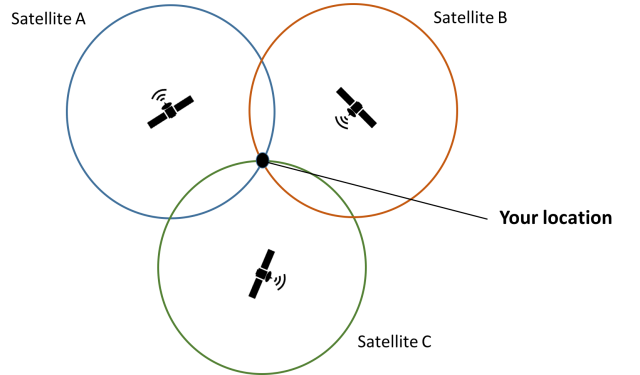
A common use of GPS is to help drivers navigate their way around. [Image credit: Pixabay | CC0 Public Domain]
GPS. It’s the thing on your phone that helps you navigate your way to the new Thai restaurant downtown. It allows you to check into Facebook once you get there, so your friends know where you are. It helps you track whether your new Amazon book will be home by the time you finish dinner. GPS technology has become so enmeshed in the fabric of our daily lives that we’d be lost without it — not just in the metaphorical sense. But how does it actually work?
GPS, or Global Positioning System, relies on a constellation of satellites orbiting Earth, crisscrossing the sky in a latticework of pre-determined paths. At regular intervals, the 24 satellites that comprise this network simultaneously broadcast information about their position and the current time.
Smartphones with GPS chips, car navigation systems and other GPS-enabled devices are on the receiving end of this regular broadcast. Picking up a satellite’s signal is a bit like a ship searching for a lighthouse beacon while out at sea — you have to be within seeing distance to spot it. Based on the way the satellites orbit, your device can potentially see between five and eight satellites at any given time and place.
Once a signal is received in the form of radio waves, your device can calculate how far it is from a satellite using two pieces of information: the time the message was relayed and how long it took to get to where you are. Your device then needs to repeat the process and collect information from at least two other satellites to calculate your coordinates. GPS technology is now so advanced that it can predict your location within a 10 to 50 feet accuracy.
This process of honing in on your location is based on a mathematical principle called trilateration, which uses overlapping regions to find a common, intersecting area. To picture this, imagine you have a blank sheet of paper. Draw a circle — this represents all the possible places you could be knowing that you’re, say, 12,000 miles away from Satellite A. Now draw another circle to represent your distance from Satellite B and you’ll see that based on how the circles overlap, there are two possible points you could be. A third circle shows the single point where all three figures intersect — and allows you to determine your location.

GPS technology determines your location by measuring distances from three satellites, using the mathematical principle of trilateration. [Image credit: Sandy Ong; Satellites from: MaxxL | CC BY-SA 3.0 ]
But since you can’t be outdoors within seeing range of satellites at all times, location apps on your phone use Assisted GPS, or A-GPS. This helps speed things up when your signal gets blocked indoors or around tall buildings, by gleaning some of the information your GPS needs from cell towers (which have built-in GPS units) or from your Wi-Fi positioning system. With that added boost to GPS, you can be lost and found in a matter of seconds.
2 Comments
Very interesting and informative article, put in easy to understand language.
Wow! So that’s how is works ! Amazing to even think what these GPS can do in another 20-30 years from now. Thanks for this clear description on how this works.